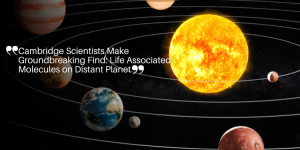Scientists Uncover Surprising Location of Sun’s Magnetic Field Generation

Introduction
Ah, the sun – that brilliant ball of fiery gas that lights up our days and warms our planet. But beneath its dazzling exterior lies a magnetic mystery that has perplexed astrophysicists for centuries. You see, our star has a powerful magnetic field, and its origins have been the subject of intense scientific debate and speculation.
Now, a groundbreaking study has proposed a fresh theory that could shed light on this enigma. According to the researchers, the sun’s magnetic field may not be generated deep within its core, as previously assumed. Instead, they suggest that this invisible force field is birthed much closer to the surface, at a depth of just 20,000 miles (32,100 kilometers).
A Paradigm Shift
Previous models had placed the source of the sun’s magnetic field at a staggering 130,000 miles (209,200 kilometers) below the surface. But this new theory challenges that long-held assumption, offering a fresh perspective that could help us better understand the sun’s enigmatic 11-year cycle and improve our ability to forecast space weather.
The implications of this study are far-reaching, as the sun’s magnetic field is responsible for the formation of sunspots and the unleashing of solar storms that can disrupt GPS and communication satellites, as well as dazzle night sky watchers with auroras.
Aligning with Observations
One of the key strengths of this new theory is its ability to account for a phenomenon known as torsional oscillations – magnetically driven flows of gas and plasma within and around the sun that contribute to sunspot formation. As the researchers explain, these oscillations follow an 11-year cycle, just like the sun’s magnetic field.
By incorporating these observed motions into their calculations, the team has developed a model that aligns with solar observations in a way that previous theories could not. This newfound alignment offers a tantalizing glimpse into the inner workings of our star and could pave the way for more accurate predictions of solar activity.
A Computational Feat
But this breakthrough didn’t come easy. According to the researchers, developing the numerical algorithms required to run these complex simulations was a monumental task, taking over 10 years of effort. And even with these algorithms in hand, the team needed to harness the immense computational power of a NASA supercomputer, utilizing a staggering 15 million CPU-hours – a feat that would have taken a single laptop an estimated 450 years to accomplish.
While this pioneering work is undoubtedly promising, the researchers themselves acknowledge that these initial results are merely the first steps in unraveling the astrophysical enigma that is the sun’s magnetic field. As one commentator noted, the team has added “a provocative ingredient to the theoretical mix” that could prove instrumental in refining our understanding of these solar phenomena.
So, while the sun’s magnetic mysteries may not be fully solved just yet, this groundbreaking study has certainly shed some much-needed light on the subject, igniting a new era of exploration and discovery in the realm of astrophysics.
Previous Theories and Their Limitations
For centuries, scientists have grappled with the mystery of the sun’s magnetic field and its role in driving the 11-year solar cycle. Earlier theories assumed that this powerful magnetic force originated deep within the sun’s core, but these models had significant limitations.
Challenges with Deep Origin Models
The prevailing idea was that the sun’s magnetic field was generated by a dynamo effect, where the churning of charged particles in the sun’s outer core created electrical currents that produced the magnetic field. However, these “deep origin” models struggled to accurately predict solar activity and the 11-year cycle of sunspots and solar storms.
One of the key issues was that these models failed to account for a phenomenon called torsional oscillations – magnetically driven flows of gas and plasma within and around the sun that contribute to sunspot formation. These oscillations, which speed up or slow down the rotation of different regions of the sun, also exhibit an 11-year cycle that was not properly explained by the deep origin models.
Limitations in Forecasting Capabilities
Another significant limitation of the deep origin models was their inability to reliably forecast the strength and intensity of future solar cycles. As Lecoanet noted, “The previous models (assuming the solar magnetic field is generated deep within the Sun) have not been able to make accurate forecasts or (determine) if the next solar cycle will be strong or weak.”
Accurate forecasting of solar activity is crucial for mitigating the potential impacts on GPS and communication satellites, as well as preparing for auroras and other space weather events. The shortcomings of the deep origin models highlighted the need for a more comprehensive theory that could better explain the observed phenomena and improve our ability to predict solar behavior.
The New Theory
Challenging long-held assumptions, a groundbreaking new theory proposes that the sun’s mighty magnetic field originates much closer to its surface than previously thought. This fresh perspective suggests that the source of the sun’s magnetic might lies a mere 20,000 miles (32,100 km) below the solar surface, which is strikingly shallow compared to earlier models presuming depths of around 130,000 miles (209,200 km).
Torsional Twists and Sunspot Secrets
One of the key strengths of this novel theory is its ability to elegantly account for the intriguing phenomenon of torsional oscillations – magnetically driven flows of gas and plasma within and around the sun that contribute to the formation of sunspots. These oscillations exhibit a cyclical pattern, with some regions speeding up or slowing down their rotation, while others maintain a steady pace, mirroring the 11-year solar magnetic cycle itself.
According to a study by Northwestern University’s Daniel Lecoanet, “Our new hypothesis provides a natural explanation for the torsional oscillations that is missing from previous models.” This alignment with observed solar behavior lends credibility to the theory’s shallow magnetic field origin postulate.
Computational Prowess Unravels the Mystery
Achieving this theoretical breakthrough was no small feat, as it required the development of innovative numerical algorithms capable of handling the immense computational demands of simulating the sun’s complex magnetic dynamics. The lead author, Geoff Vasil from the University of Edinburgh, had conceived the initial idea two decades ago, but it took over 10 years to refine the algorithms and harness the power of a NASA supercomputer to conduct the simulations.
As Lecoanet explains, “We have used around 15 million CPU-hours for this investigation. That means that if I had tried to run the calculations on my laptop, it would have taken me about 450 years.” This staggering computational effort underscores the complexity of unraveling the sun’s magnetic mysteries.
A Promising Step Forward
While this pioneering work is still in its initial stages, it has already garnered praise from experts in the field. Ellen Zweibel, a professor of astronomy and physics at the University of Wisconsin-Madison, commended the study, stating that it has “added a provocative ingredient to the theoretical mix that could prove key to unraveling this astrophysical enigma.”
With its innovative approach and potential to enhance our understanding of the perplexing 11-year solar cycle, this new theory represents a promising step forward in the quest to unlock the secrets of the sun’s magnetic field and its far-reaching impacts on space weather and our technological infrastructure.
Computational Challenges and Breakthroughs
Unraveling the enigma of the sun’s magnetic field and its cyclical behavior required a herculean computational effort. The researchers faced daunting challenges in developing numerical algorithms sophisticated enough to simulate the intricate dynamics within our star’s turbulent interior.
Innovative Algorithms and Supercomputing Power
A pivotal breakthrough came in the form of novel numerical algorithms devised by the team. The lead author, Professor Geoff Vasil from the University of Edinburgh, had conceived the idea nearly two decades ago, but it took over a decade to refine and implement the algorithms.
Even with the cutting-edge algorithms, the simulations required immense computational power that could only be harnessed by a NASA supercomputer. Dr. Daniel Lecoanet, a researcher at Northwestern University, revealed that the team utilized an astonishing 15 million CPU-hours for their investigation. “That means that if I had tried to run the calculations on my laptop, it would have taken me about 450 years,” he quipped.
Overcoming Data Scarcity
One of the significant challenges in studying the sun’s interior lies in the scarcity of direct observational data. Unlike phenomena on Earth, scientists cannot simply conduct experiments or deploy sensors deep within the sun’s core. Instead, they must rely on indirect measurements and observations of the sun’s surface and atmosphere.
To overcome this hurdle, the researchers developed a model that accounted for a phenomenon called torsional oscillation – magnetically driven flows of gas and plasma within and around the sun that contribute to sunspot formation. By incorporating these observed motions into their simulations, they could infer the behavior of the magnetic field deeper inside the sun.
A Promising Path Forward
While the initial results are promising, Ellen Zweibel, a professor of astronomy and physics at the University of Wisconsin-Madison, acknowledged that the study represents an intriguing addition to the “theoretical mix” that could prove crucial in unraveling this long-standing astrophysical enigma.
The groundbreaking computational approach and the insights gleaned from this study pave the way for more precise future research and models, bringing us closer to fully comprehending the sun’s magnetic field and its intricate dance with the 11-year solar cycle.
Implications and Future Prospects
The groundbreaking theory proposed by Lecoanet and his team offers tantalizing insights into the enigmatic 11-year solar cycle, a perplexing phenomenon that has baffled astronomers for centuries. By suggesting that the sun’s magnetic field originates much closer to the surface than previously thought, this study could pave the way for more accurate predictions of solar activity.
Enhancing Space Weather Forecasting
One of the most exciting implications of this research is the potential to improve space weather forecasting. Solar storms, triggered by the sun’s magnetic field, can wreak havoc on GPS and communication satellites, as well as dazzle night sky watchers with breathtaking auroras. With a better understanding of the underlying mechanisms driving these events, scientists may be able to provide more reliable warnings and prepare for potential disruptions.
As Lecoanet aptly notes, “We want to forecast if the next solar cycle will be particularly strong, or maybe weaker than normal. The previous models (assuming the solar magnetic field is generated deep within the Sun) have not been able to make accurate forecasts or (determine) if the next solar cycle will be strong or weak.”
Refining Our Understanding of the Solar Cycle
Beyond practical applications, this study holds the promise of deepening our fundamental understanding of the sun’s behavior. The 11-year solar cycle, marked by the waxing and waning of sunspot activity, has long been a source of fascination and mystery. By accounting for phenomena like torsional oscillations, the new theory could shed light on the intricate dance of magnetic fields and plasma flows that govern this enigmatic cycle.
A Stepping Stone to Future Discoveries
While the initial results are undoubtedly promising, the researchers themselves acknowledge that this study is merely the first step on a longer journey. As Zweibel, a professor at the University of Wisconsin-Madison, notes, “The team had added a provocative ingredient to the theoretical mix that could prove key to unravelling this astrophysical enigma.”
The true impact of this work may lie in its ability to inspire and inform future research. By challenging long-held assumptions and introducing novel computational techniques, this study has opened the door to a wealth of new questions and avenues for exploration. As scientists continue to refine their models and leverage ever-increasing computational power, our understanding of the sun’s magnetic field and its intricate cycles may undergo a profound transformation.
In the ever-evolving realm of astrophysics, breakthroughs like this serve as stepping stones, propelling us forward on a journey of discovery that promises to unveil the secrets of our nearest star and the cosmic forces that shape our universe.







